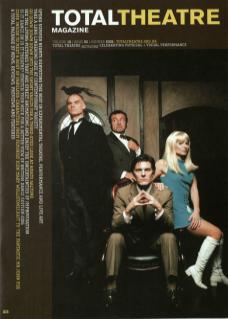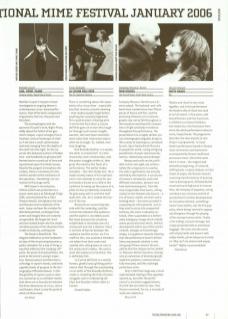Matilda's Leyser's triptych of work investigates an ongoing theme in contemporary circus-based performance, that of the basic components of geometry: the line, the point and the plane
The evening begins with the sparsest of Leyser's work, Night-Plane, oddly about the fullest of her geometric shapes. Leyser emerges from a funereal, vertical landscape of cloth as if she were a small subterranean mammal emerging from the depths of the earth into the night. As she traverses this darkened surface of hidden foot- and handholds we glimpse half-formed stories scored out of time and repositioned upon this bleak canvas. Despite the pungent atmosphere she creates, there is a tendency for the mind to wonder at the mechanics of the operation, ‘shortening' our connection to this stage world.
With Leyser's second piece, Lifeline (which was presented as a stand-alone piece at Edinburgh Fringe 2005, and shortlisted for a Total Theatre Award), she lightens the tone and the perceived complexity of her work. Leyser eschews the complex for delicately pitched, archetypal characters and images that are instantly recognisable. We forget the 'trick' and are instead drawn into the simple narrative journey of her character from cradle to maturity, and beyond.
The finale is Dead Point. This elegant meditation on the fundamental joys of the cloudswing becomes a poetic metaphor for a way of living – a way that embraces the 'jumping-off' point, the point of all possibilities, the point at the end of a swing's trajectory. Bryony Lavery's text becomes a soft elegy in Leyser's hands, and lends a gentle clarity of purpose to the choreography of Michele Weaver. In this the gentility of Leyser's work is clearest, and serves as a confident marker that there are no boundaries between the three dimensions of circus, dance and theatre; there is only the point at which all three meet.

